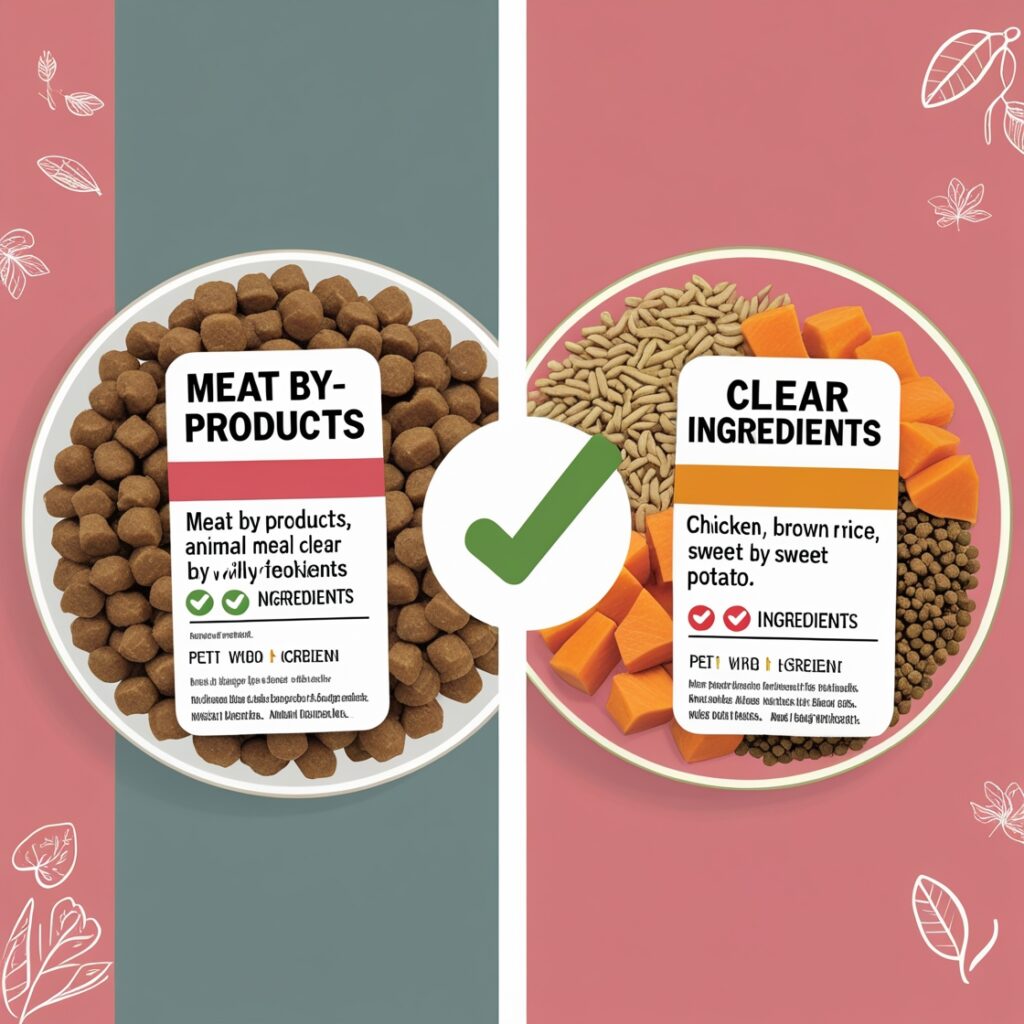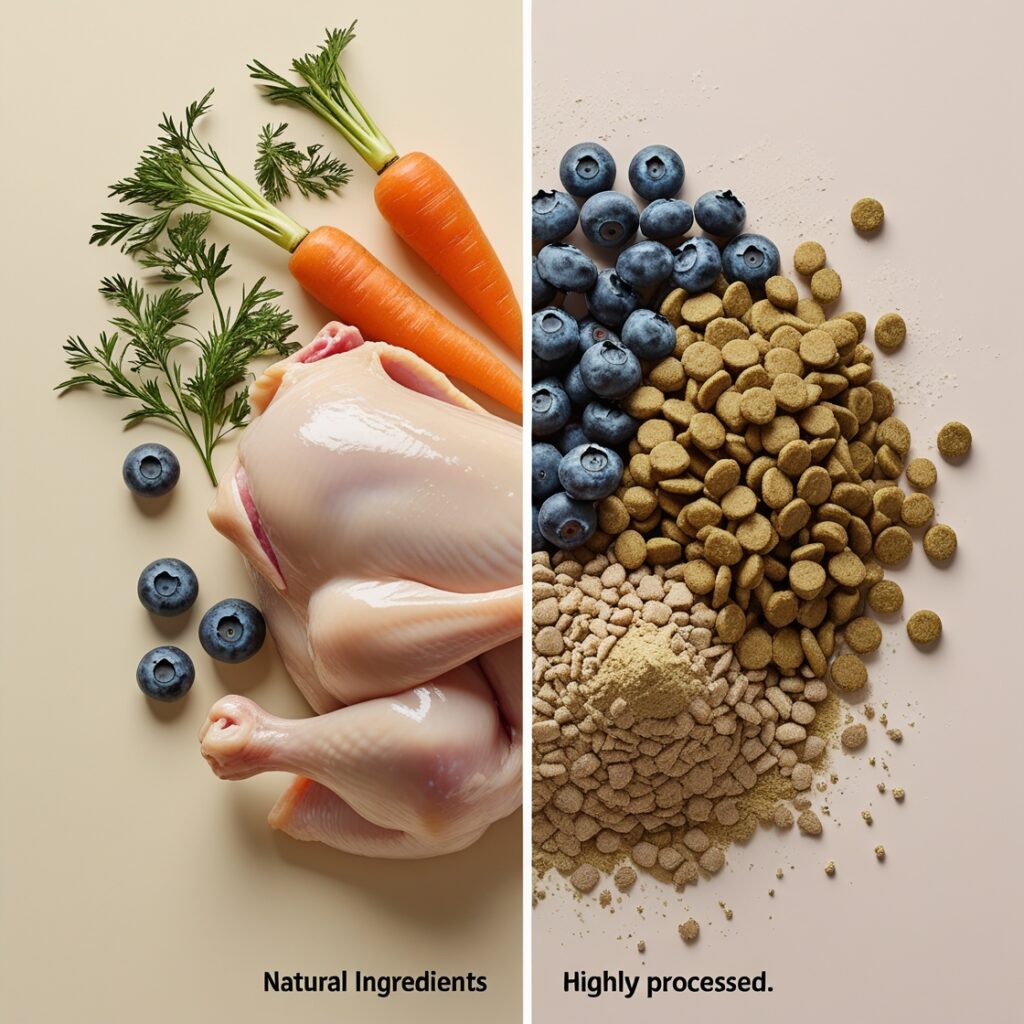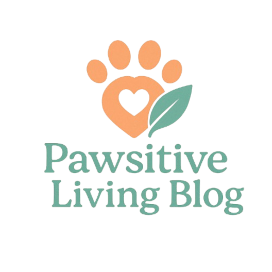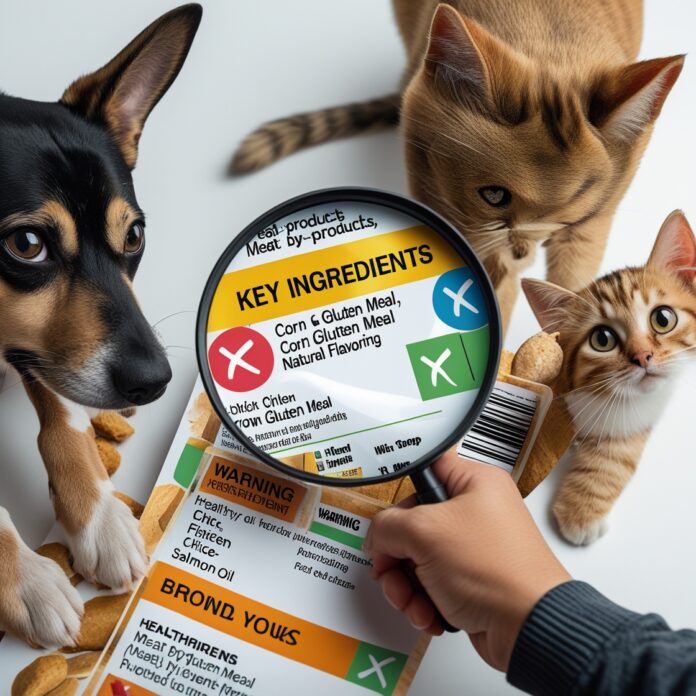Have you ever stared at your pet’s food label, feeling overwhelmed by the long list of unfamiliar ingredients and confusing terms? 🤔 You’re not alone. As pet owners, we want the best for our furry friends, but deciphering pet food labels can feel like cracking a secret code.
The truth is, what’s really in your pet’s food might surprise you. From mysterious meat by-products to ambiguous “natural flavors,” pet food labels often hide more than they reveal. But fear not! 🦸♀️ It’s time to pull back the curtain on pet nutrition and empower yourself with the knowledge to make the best choices for your four-legged companion.
In this eye-opening guide, we’ll dive deep into the world of pet food labels, unraveling their mysteries and equipping you with the tools to become a savvy pet food detective. From understanding ingredient lists to decoding marketing buzzwords, we’ll cover everything you need to know to ensure your pet’s bowl is filled with nutrition, not confusion. Let’s embark on this journey to decode pet food labels and make informed decisions that will keep your furry friend healthy and happy for years to come! 🐾

Understanding Pet Food Labels
A. Key components of a pet food label
When decoding pet food labels, it’s crucial to understand the key components. Here’s a breakdown of what you’ll typically find:
- Product name
- Net weight
- Manufacturer’s information
- Ingredient list
- Guaranteed analysis
- Nutritional adequacy statement
- Feeding guidelines
- Calorie content
Let’s compare the importance of these components:
| Component | Importance | What it tells you |
|---|---|---|
| Ingredient list | High | Actual contents of the food |
| Guaranteed analysis | High | Minimum percentages of nutrients |
| Nutritional adequacy statement | Medium | Whether the food is complete and balanced |
| Feeding guidelines | Medium | Recommended serving sizes |
| Calorie content | Medium | Energy provided per serving |
B. Regulatory bodies and their requirements
In the United States, pet food labels are regulated by two main bodies:
- The Food and Drug Administration (FDA)
- The Association of American Feed Control Officials (AAFCO)
These organizations ensure that pet food labels provide accurate information and meet certain standards. For instance, AAFCO requires that pet food labels include:
- A product name
- A species for which the food is intended
- A guaranteed analysis
- An ingredient statement
- Feeding directions
- The name and address of the manufacturer or distributor
C. Importance of reading labels carefully
Reading pet food labels carefully is crucial for several reasons:
- Identifying quality ingredients
- Avoiding harmful additives
- Ensuring nutritional balance
- Comparing products effectively
- Managing your pet’s specific dietary needs
By understanding these components and regulations, you can make more informed decisions about your pet’s nutrition. Now that we’ve covered the basics of pet food labels, let’s delve into decoding the ingredient list, which is often the most crucial part of the label.
Decoding the Ingredient List
A. Order of ingredients and its significance
When decoding pet food labels, understanding the order of ingredients is crucial. Ingredients are listed by weight, with the heaviest items appearing first. This means that the first few ingredients make up the majority of the food’s composition.
| Position | Significance |
|---|---|
| 1st-3rd | Primary ingredients, highest quantity |
| 4th-6th | Secondary ingredients, moderate quantity |
| 7th+ | Minor ingredients, smallest quantity |
B. Common ingredients and their purposes
Pet food labels often include a variety of ingredients, each serving a specific purpose:
- Proteins (e.g., chicken, beef, fish): Provide essential amino acids
- Carbohydrates (e.g., rice, corn, wheat): Supply energy and fiber
- Fats (e.g., chicken fat, fish oil): Offer energy and support skin health
- Vitamins and minerals: Ensure balanced nutrition
C. Red flags to watch out for
Be cautious of:
- Generic terms like “meat by-products” or “animal digest”
- Artificial colors, flavors, or preservatives
- Excessive use of fillers (e.g., corn gluten meal)
- Multiple forms of the same ingredient (e.g., corn, corn meal, corn gluten)
D. Identifying high-quality protein sources
Look for:
- Named animal proteins (e.g., “chicken” instead of “poultry”)
- Whole meats or meat meals (e.g., “chicken meal”)
- Multiple protein sources for balanced amino acid profile
- Novel proteins for pets with allergies (e.g., duck, venison)
Now that we’ve decoded the ingredient list, let’s move on to understanding the nutrient analysis and guaranteed analysis section of pet food labels.

Nutrient Analysis and Guaranteed Analysis
Essential nutrients for pets
When it comes to pet nutrition, understanding the essential nutrients is crucial for your furry friend’s health. Here’s a breakdown of the key nutrients and their importance:
| Nutrient | Function | Common Sources |
|---|---|---|
| Protein | Muscle development, tissue repair | Meat, fish, eggs |
| Fats | Energy, coat health | Animal fats, fish oil |
| Carbohydrates | Energy, digestion | Grains, vegetables |
| Vitamins | Various metabolic functions | Fruits, vegetables, organ meats |
| Minerals | Bone health, electrolyte balance | Meat, bone meal, supplements |
It’s important to note that the ideal balance of these nutrients can vary depending on your pet’s age, size, and health condition.
Interpreting percentage values
The guaranteed analysis on pet food labels provides percentage values for key nutrients. Here’s how to interpret them:
- Crude protein: Minimum percentage
- Crude fat: Minimum percentage
- Crude fiber: Maximum percentage
- Moisture: Maximum percentage
Remember that these values are presented on an “as-fed” basis, which includes moisture content. For a more accurate comparison between different foods, you may need to convert these values to a dry matter basis.
Moisture content and its impact on nutrition
Moisture content plays a significant role in pet food nutrition:
- Hydration: Higher moisture content can contribute to your pet’s daily water intake
- Nutrient density: Dry foods typically have higher nutrient concentration per volume
- Calorie content: Wet foods often have fewer calories per serving due to higher water content
When comparing wet and dry foods, it’s essential to consider the moisture content to ensure your pet receives adequate nutrition. Now that we’ve covered nutrient analysis, let’s explore how marketing terms on pet food labels can influence your purchasing decisions.
Marketing Terms and Their True Meanings
“Natural” vs “Organic”
When it comes to pet food labels, understanding the difference between “natural” and “organic” is crucial. Here’s a breakdown:
| Term | Definition | Regulation |
|---|---|---|
| Natural | Ingredients derived from plants, animals, or mined sources | Loosely regulated |
| Organic | Produced without synthetic pesticides, fertilizers, or GMOs | Strictly regulated by USDA |
While “natural” ingredients may seem healthier, the term is not strictly regulated in pet food. “Organic,” on the other hand, must meet specific USDA standards.
“Grain-free” and its implications
The grain-free trend has gained popularity, but it’s essential to understand its implications:
- Potential benefits: Easier digestion for some pets
- Possible drawbacks: Higher fat content, potential link to heart issues in dogs
Always consult with your veterinarian before switching to a grain-free diet.
“Complete and balanced” – what it really means
This term indicates that the pet food meets the minimum nutritional requirements set by AAFCO (Association of American Feed Control Officials). However, it’s important to note:
- Doesn’t guarantee optimal nutrition for all pets
- Requirements vary based on life stage and health conditions
Buzzwords to be wary of
Be cautious of these marketing terms:
- “Premium” or “Gourmet”: No legal definition
- “Human-grade”: Rarely true for entire product
- “Holistic”: Not a regulated term in pet food
Now that we’ve decoded these marketing terms, let’s explore the world of additives, preservatives, and artificial ingredients in pet food.
Additives, Preservatives, and Artificial Ingredients
Common additives and their functions
Pet food often contains various additives to enhance flavor, appearance, and shelf life. Here’s a list of common additives and their functions:
- Emulsifiers: Stabilize mixtures of oil and water
- Thickeners: Improve texture and consistency
- Colorants: Enhance visual appeal
- Flavor enhancers: Improve taste
- Antioxidants: Prevent spoilage and extend shelf life
| Additive Type | Examples | Function |
|---|---|---|
| Emulsifiers | Lecithin, Carrageenan | Prevent separation of ingredients |
| Thickeners | Guar gum, Xanthan gum | Create desired texture |
| Colorants | Caramel, Iron oxide | Improve appearance |
| Flavor enhancers | Yeast extract, MSG | Enhance palatability |
| Antioxidants | Vitamin E, Rosemary extract | Prevent oxidation |
Natural vs artificial preservatives
Natural preservatives are derived from plant or animal sources, while artificial preservatives are chemically synthesized. Here’s a comparison:
Natural Preservatives:
- Vitamin E (Tocopherols)
- Vitamin C (Ascorbic acid)
- Rosemary extract
- Citric acid
Artificial Preservatives:
- BHA (Butylated hydroxyanisole)
- BHT (Butylated hydroxytoluene)
- Ethoxyquin
- Propylene glycol
Potential health risks of certain ingredients
While additives and preservatives serve important functions, some may pose health risks to pets. Artificial preservatives like BHA, BHT, and ethoxyquin have been linked to potential health issues in animals. Certain colorants and flavor enhancers may also cause allergic reactions or digestive problems in sensitive pets.
Now that we’ve explored the world of additives and preservatives in pet food, let’s move on to making informed choices for your furry friend’s nutrition.

Making Informed Choices for Your Pet
Matching food to your pet’s life stage and health needs
When selecting pet food, it’s crucial to consider your pet’s specific life stage and health requirements. Puppies and kittens need different nutrients than adult or senior pets. For example:
| Life Stage | Key Nutritional Needs |
|---|---|
| Puppy/Kitten | Higher protein and fat content, DHA for brain development |
| Adult | Balanced nutrition, moderate protein and fat |
| Senior | Lower calories, higher fiber, joint support supplements |
Additionally, pets with health conditions may require specialized diets. Consult your veterinarian for recommendations tailored to your pet’s unique needs.
Consulting with veterinarians
Your veterinarian is an invaluable resource when choosing the right food for your pet. They can:
- Assess your pet’s overall health and nutritional needs
- Recommend specific brands or types of food
- Address any concerns about ingredients or allergies
- Provide guidance on portion sizes and feeding schedules
Regular check-ups allow your vet to monitor your pet’s health and adjust dietary recommendations as needed.
Alternatives to commercial pet foods
While commercial pet foods are convenient, some pet owners opt for alternative diets:
- Home-cooked meals
- Raw diets
- Freeze-dried or dehydrated foods
- Prescription diets for specific health conditions
Each option has pros and cons, so research thoroughly and consult your vet before making a switch.
Transitioning to a new diet safely
When changing your pet’s food, gradual transition is key to avoid digestive upset. Follow this general guideline:
- Day 1-3: 75% old food, 25% new food
- Day 4-6: 50% old food, 50% new food
- Day 7-9: 25% old food, 75% new food
- Day 10: 100% new food
Monitor your pet closely during this process, watching for any signs of discomfort or allergic reactions. If issues arise, slow down the transition or consult your veterinarian for advice.
Navigating the world of pet food labels can be a challenging task, but armed with the right knowledge, you can make informed decisions about your furry friend’s nutrition. By understanding the ingredient list, nutrient analysis, and marketing terms, you’ll be better equipped to choose a diet that meets your pet’s needs. Remember to look beyond flashy packaging and buzzwords, focusing instead on the quality and appropriateness of ingredients for your pet’s specific requirements.
Ultimately, the best food for your pet is one that provides balanced nutrition, supports their overall health, and fits within your budget. If you’re ever unsure about your pet’s dietary needs or have concerns about specific ingredients, don’t hesitate to consult with your veterinarian. They can provide personalized advice and help you make the best choice for your beloved companion’s long-term health and well-being.



